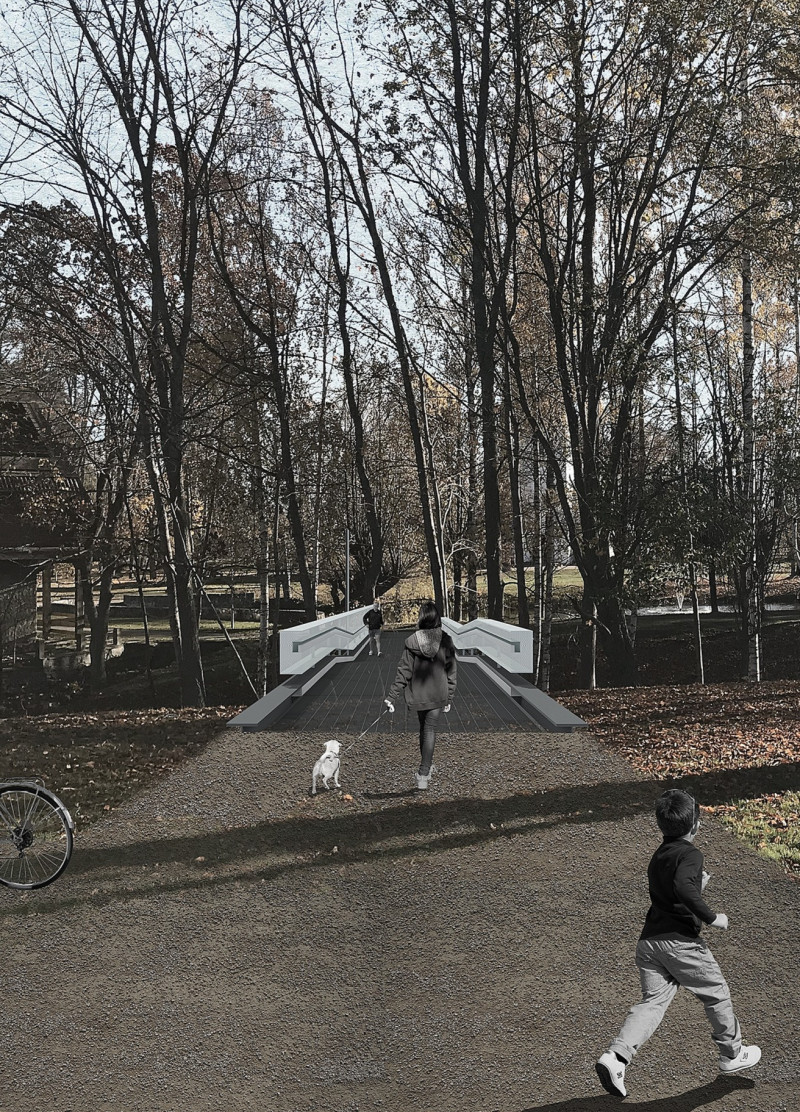5 key facts about this project
The Seethrough Footbridge is located in the tranquil setting of Gauja National Park, Latvia. It serves as an important link for visitors exploring the park’s diverse landscape. The design focuses on enhancing pedestrian accessibility while respecting the natural surroundings. The emphasis on sustainability and visual continuity allows the structure to blend into the environment harmoniously.
Framework and Structure
The design takes into account the unique topography of the site. It is carefully placed to ensure easy access while maintaining a sufficient height for larger vehicles to pass underneath. The gentle slope of the bridge allows all users, regardless of mobility, to cross with ease. This thoughtful approach ensures that the bridge functions well in its setting.
Material Transparency
One notable aspect of the bridge is its emphasis on transparency. Non-opaque materials are used to create visual connections with the environment. The primary structure is made from steel, which provides necessary strength and durability. Additionally, the use of smoked acrylic sheets lets light enter the space, resulting in shifting patterns of light and shadow that enhance the atmosphere as people move across the bridge.
Engagement with Landscape
The arrangement of the bridge is designed to foster interactions with the surrounding landscape. The guardrail on one side slopes gently, while the other side remains straight, directing visitors' attention toward significant features, such as the nearby lake and the Sigulda Evangelic Lutheran Church. This design approach creates a strong relationship between people and nature, allowing visitors to appreciate the beauty around them as they traverse the bridge.
The Seethrough Footbridge represents a balance of functionality and user experience, showcasing the importance of design that respects natural environments. The integration of materials and thoughtful details encourages an engaging experience for all who cross this structure.



























